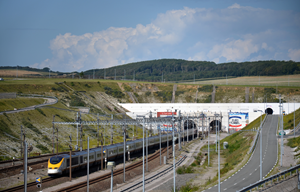
Peter Campbell Smith
The Weekly Challenge
More information
The Weekly Challenge
Perl
- Perl home page – all about the language
- Perldoc – detailed Perl documentation
- CPAN – library of useful Perl modules
Who is Peter?
I am a retired scientist and IT consultant living in Cambridge, England.

The University of Edinburgh
My IT experience started in 1967 as an undergraduate at Edinburgh University. The university had a computer - an English Electric KDF9 - and offered a voluntary short course on using it during the Easter vacation. The KDF9 had 192 kbytes of word-addressable memory and weighed about 5 tonnes. There was no persistent storage: code and data were input on 8-channel paper tape prepared offline and sent by van to the computer science department, and returned the next day.
Programming was in a loose subset of a language called Atlas Autocode, which was related to Algol, and which is not unlike Perl in its structure.
By the time I graduated and started a PhD the university had an IBM 360 computer, and the language of choice was Fortran - in many respects a more basic language than AA - but fine for scientific work. Programming was still on punched cards, but at least we had some on-line disk storage.

Purdue University, Lafayette, Indiana
Roll on a few years and I was in the USA, at Purdue University, which had a CDC 6500 'supercomputer'. It was - for then - very fast, especially for the floating point arithmetic which I needed, but it had an unusual architecture. It was word-addressable and the words were 60 bits long. The character set was only 6 bits, so had no lower-case letters and only a few rather idiosyncratic symbols. So there were 10 characters per word, and the end of a line was signified by at least 6 zero bits at the end of a word. It was here that I first used assembly language to write drivers and low-level stuff for lab equipment.
It was also the first time I had on-line access. There was only one terminal for about 6 of us, and initially it was a 110 baud electro-mechanical Teletype 33, but later we were allowed a 300 baud Texas Instruments terminal that used thermal paper.

Hershey Medical Center, Pennsylvania State University
Next stop was Penn State University medical school, located in the chocolate town of Hershey. Fortunately we had a local Digital Equipment PDP-11 running the RSX-11M operating system. It had initially 32 kbytes of memory, which I gradually increased to 128 kbytes, and we had removable hard disks - about 40cm in diameter - which held a massive 2.5 Mbytes. Although that sounds puny today, we managed a lot of serious computation - slowly.
As well as my research-related work I wrote drivers for various devices, and wrote (in assembler) a faster driver for our uplink to the main university IBM machine, 100 miles away. Our work was somewhat interrupted when Three Mile Island nuclear power station almost blew up - but fortunately it didn't.
London and back to the US
After a few years I moved back to the UK and joined Logica, one of the first British software houses, and remained there for 34 years. The two largest projects I had a technical role in were BART and the Channel Tunnel.

BART is the San Francisco area metro, and the supervisory system for running the trains on time and controlling the infrastructure was time-expired and not well documented. Between 1986 and 1989 I was back in the USA as technical manager for a team that rewrote the software in C runnning on Data General equipment, with the data held in an Oracle database.

Back to the UK
And returning to the UK I managed the project to control all the Channel Tunnel terminal traffic infrastructure at both the UK and French terminals. It was a tough project both technically and organisationally, but the tunnel opened in 1994 with all systems operational. I went back there in about 2010 and was pleased to see that our systems were all still running. Maybe they stilll are!
In the 1980s I had been involved setting up a wide-area X.25-based network for a Government initiative called the Alvey Programme, during which I learned a lot about data comms, and so in 1995 or so when industry was given access to the internet and the World Wide Web came along I conducted a one-man skunk works to create an internal website, which grew in size and complexity until changes in my role led me to focus on other things. But that was when I discovered Perl.
The 'other things' included some new technical challenges, notably the transition to Unicode and an increasing need for security and data protection, for both of which I became the local expert.
Towards retirement
In 2012 I was on the point of retiring when Logica was bought by CGI. At the time, the transition seemed chaotic, so it seemed sensible to keep my head down and find some client work. Luckily, one of the sales staff was fielding a request from a niche internet service provider for 'credit control' - the polite term for chasing non-paying customers. And - could we do it quickly? So I and a junior programmer put together what they needed in 6 weeks flat - written in Perl.
Then in 2014 I did retire, and undertook some consultancy and IT jobs for charities and non-profits on a freelance basis until Covid hit.
And that is probably more than you wanted to know.
Image of Edinburgh University © 2008 Boon Low, some rights reserved, image reduced in size
Image of Purdue University © 2013 David Ellis, some rights reserved, image reduced in size
Image of Channel Tunnel © 2014 Florian Fèvre from Mobilys,
some rights reserved, image reduced in size
Any content of this website which has been created by Peter Campbell Smith is in the public domain